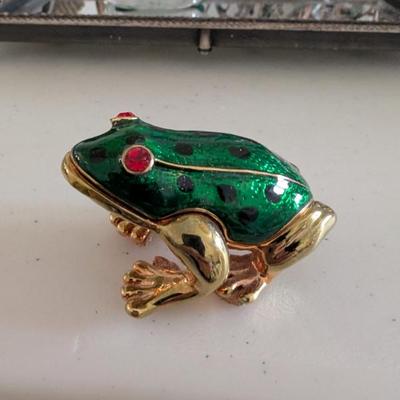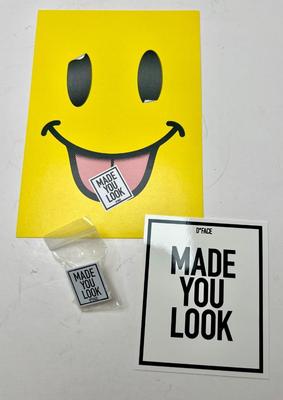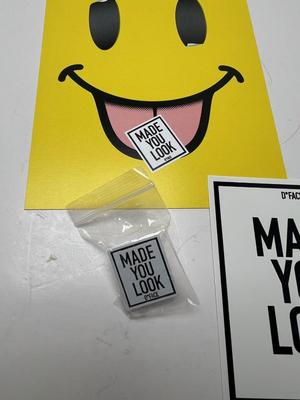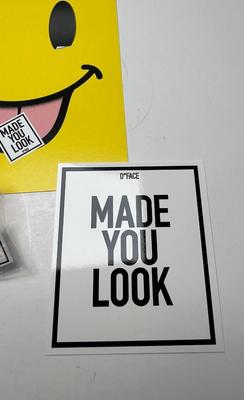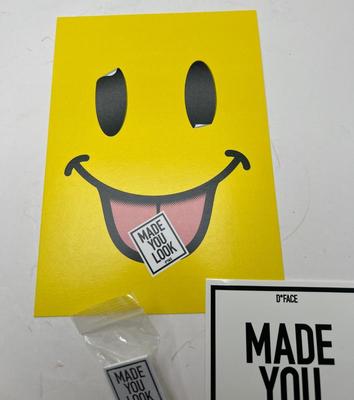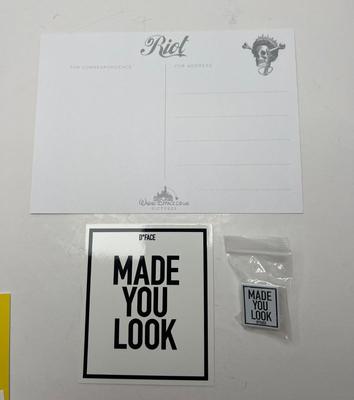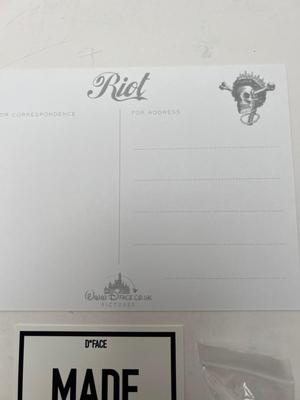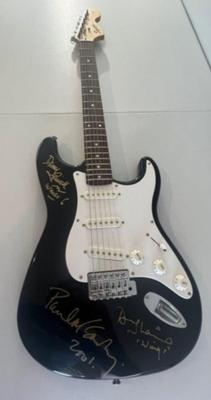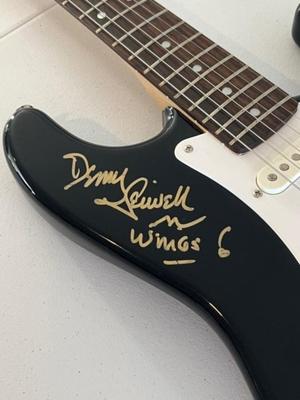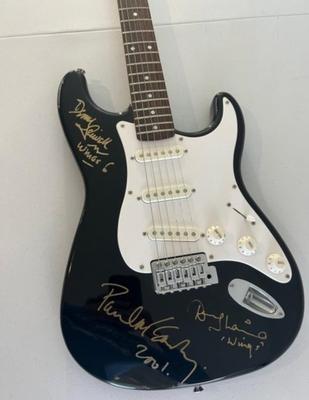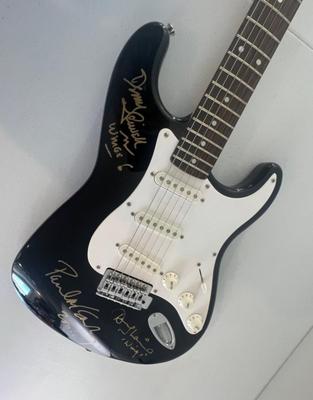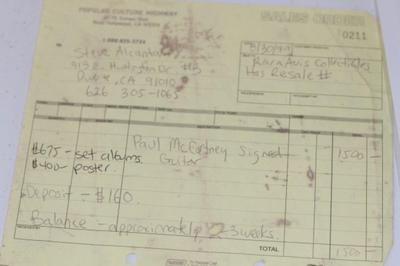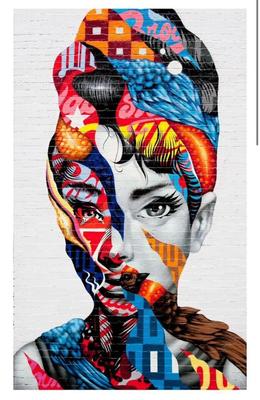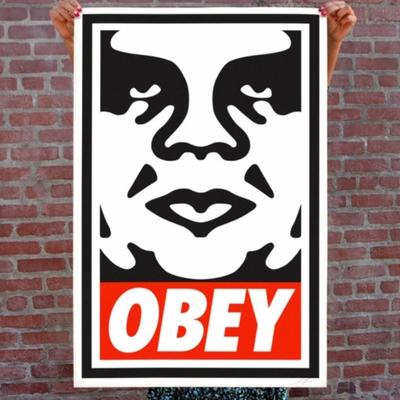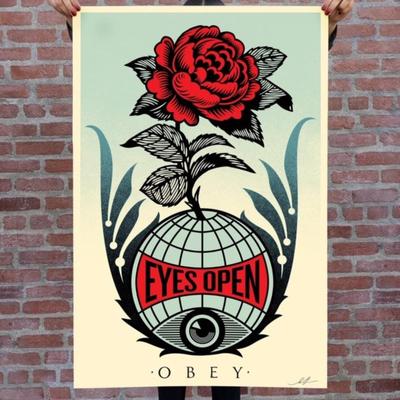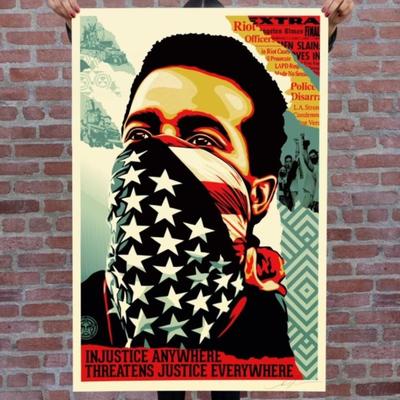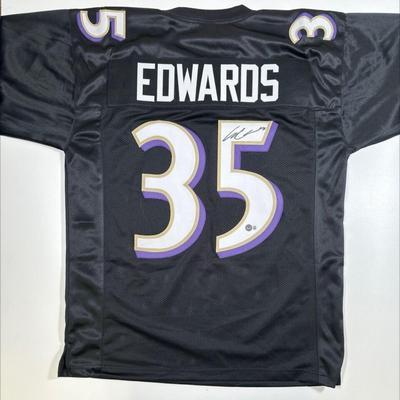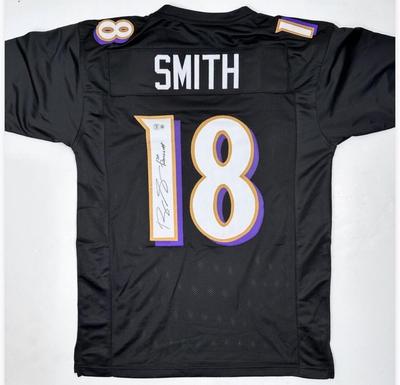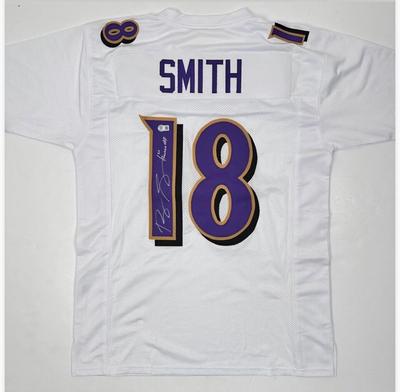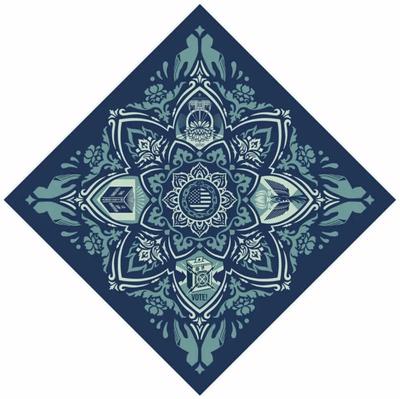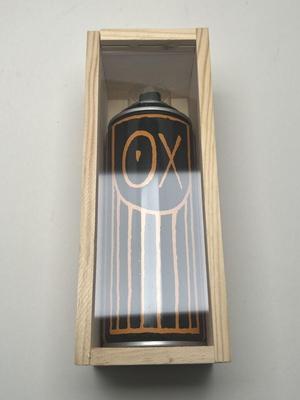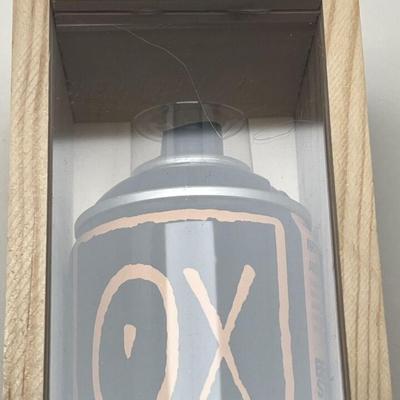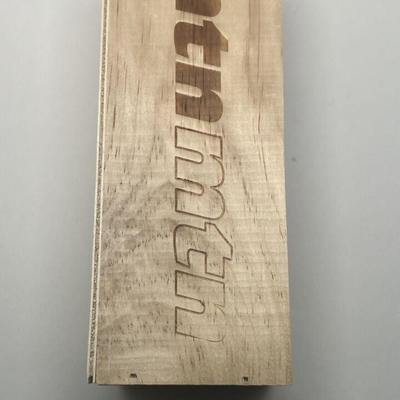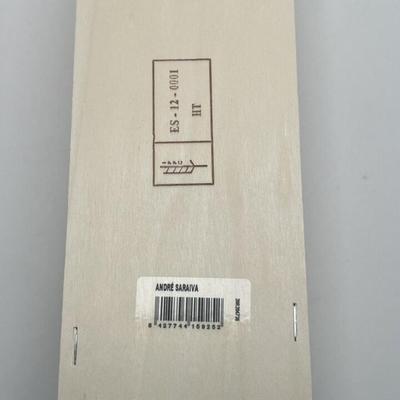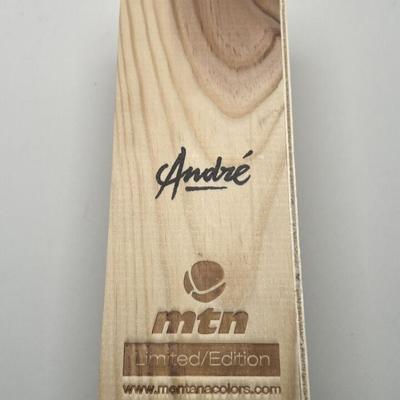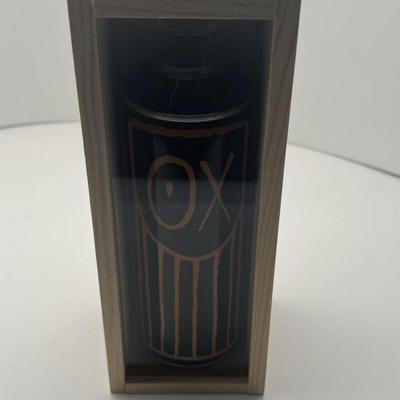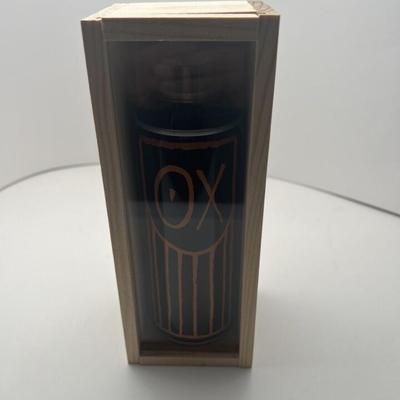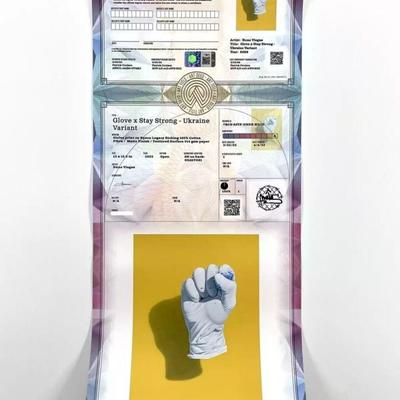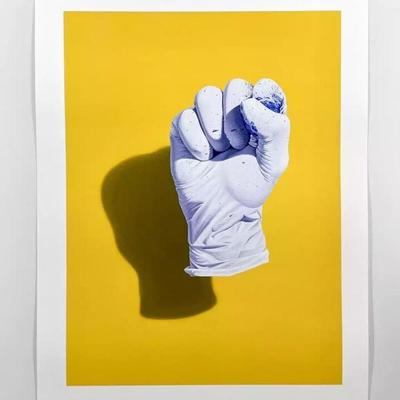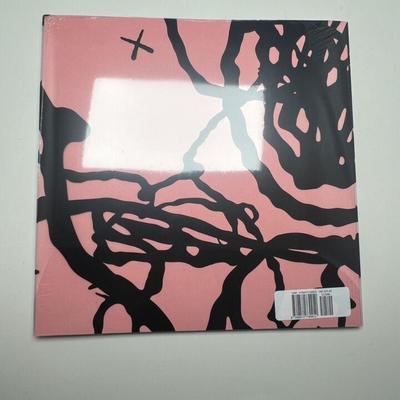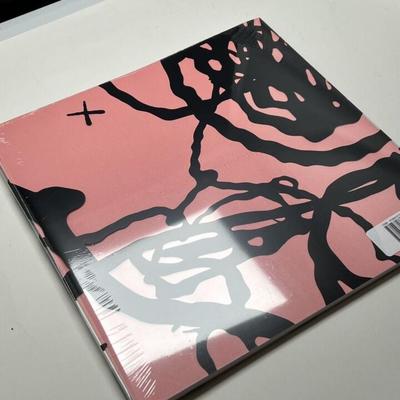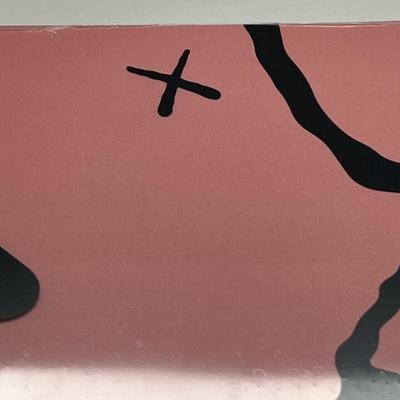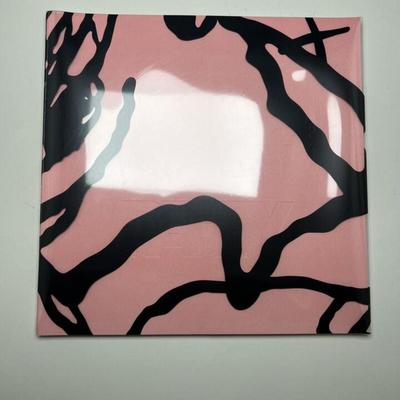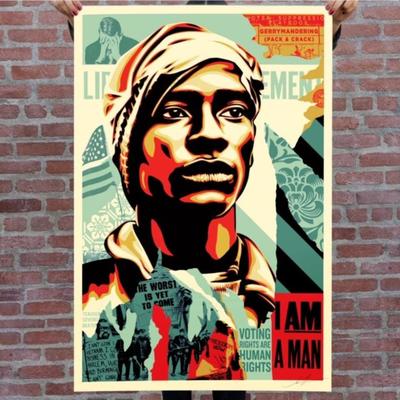Advertisement
Estate Sale Photo(s) Around Edgewood, MD 21040
6,922 estate sale photo(s) currently listed near 21040 (Edgewood, Maryland)
-

Nawer - UnforeseenSold Out.Silkscreen / Serigraph - Hand signed - 50Type: Archival Pigment Print on 310 gsm Fine Art Paper Size: 17 x 12 Inches Release: 11th April 2016. 1XRUN. Edition: 50 copies ABOUT NAWER: Architect, designer, street artist, graduate of Architecture and Urbanism program in Krakow. Has been involved with street art since mid 90's. In 2003, began to devote time between painting and freelancing in interior design. Creativity stems toward isometric graphics as extant of public and functional spaces. Interior spatiality is described as a blend of objects within space, while painting by perspective and axonometry using aerosol as a main medium. The combination of these two approaches allows a fresh take on the design of arrangement and creativity of an interior space. As his own style evolves, the goal is to always strive forward in an effort to connect painting with architecture. -
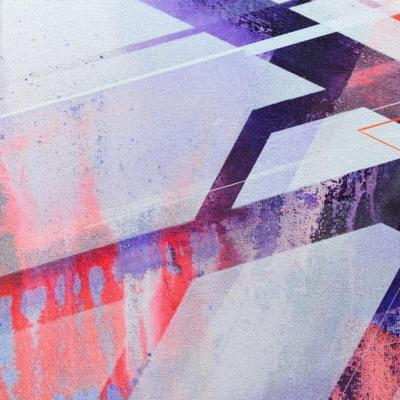
Nawer - UnforeseenSold Out.Silkscreen / Serigraph - Hand signed - 50Type: Archival Pigment Print on 310 gsm Fine Art Paper Size: 17 x 12 Inches Release: 11th April 2016. 1XRUN. Edition: 50 copies ABOUT NAWER: Architect, designer, street artist, graduate of Architecture and Urbanism program in Krakow. Has been involved with street art since mid 90's. In 2003, began to devote time between painting and freelancing in interior design. Creativity stems toward isometric graphics as extant of public and functional spaces. Interior spatiality is described as a blend of objects within space, while painting by perspective and axonometry using aerosol as a main medium. The combination of these two approaches allows a fresh take on the design of arrangement and creativity of an interior space. As his own style evolves, the goal is to always strive forward in an effort to connect painting with architecture. -

Nawer - UnforeseenSold Out.Silkscreen / Serigraph - Hand signed - 50Type: Archival Pigment Print on 310 gsm Fine Art Paper Size: 17 x 12 Inches Release: 11th April 2016. 1XRUN. Edition: 50 copies ABOUT NAWER: Architect, designer, street artist, graduate of Architecture and Urbanism program in Krakow. Has been involved with street art since mid 90's. In 2003, began to devote time between painting and freelancing in interior design. Creativity stems toward isometric graphics as extant of public and functional spaces. Interior spatiality is described as a blend of objects within space, while painting by perspective and axonometry using aerosol as a main medium. The combination of these two approaches allows a fresh take on the design of arrangement and creativity of an interior space. As his own style evolves, the goal is to always strive forward in an effort to connect painting with architecture. -
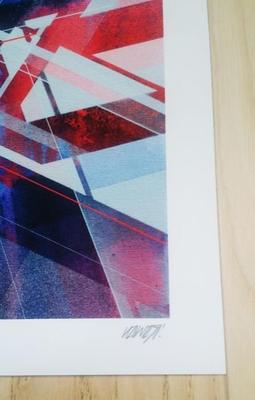
Nawer - UnforeseenSold Out.Silkscreen / Serigraph - Hand signed - 50Type: Archival Pigment Print on 310 gsm Fine Art Paper Size: 17 x 12 Inches Release: 11th April 2016. 1XRUN. Edition: 50 copies ABOUT NAWER: Architect, designer, street artist, graduate of Architecture and Urbanism program in Krakow. Has been involved with street art since mid 90's. In 2003, began to devote time between painting and freelancing in interior design. Creativity stems toward isometric graphics as extant of public and functional spaces. Interior spatiality is described as a blend of objects within space, while painting by perspective and axonometry using aerosol as a main medium. The combination of these two approaches allows a fresh take on the design of arrangement and creativity of an interior space. As his own style evolves, the goal is to always strive forward in an effort to connect painting with architecture. -
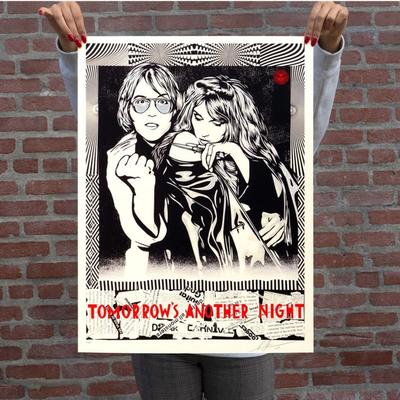
Artist: Niagra x Shepard Fairey Title: Tomorrows Another Night - Red Edition Type: 3-Color Screen Print on 320gsm Natural Coventry Rag Vellum Size: 18 x 24 Inches Release: July 02, 2021 Print comes signed, numbered and with a Certificate of Authenticity. About This Art: For Tomorrows Another Night I chose an image of Ron and Niagara where I think they both look amazing, but there was a nice balance between in-your-face aggression with Rons pose making eye contact holding his fist up, and Niagaras seemingly demure embrace of Ron, but anyone who knows Niagara understands that though she may look sedate, shes pulling the strings. I added a switchblade that she is caressing with her finger, as a way to amplify her femme fatale chic, and because I thought it lent itself to my original idea of a title Bonnie & Clyde Were Lightweights. - Shepard Fairey Shepards images of us are done so well. Its not easy to get to the essence and Shepard has honed his powers to perfection. Ive also always loved doing collages and inking. For Shepards image background, I only used Destroy All Monsters or Dark Carnivals real press & vintage flyers. I just grabbed a couple handfuls & combed through, cut out, glued down and passed out. - Niagara -

Artist: Niagra x Shepard Fairey Title: Tomorrows Another Night - Red Edition Type: 3-Color Screen Print on 320gsm Natural Coventry Rag Vellum Size: 18 x 24 Inches Release: July 02, 2021 Print comes signed, numbered and with a Certificate of Authenticity. About This Art: For Tomorrows Another Night I chose an image of Ron and Niagara where I think they both look amazing, but there was a nice balance between in-your-face aggression with Rons pose making eye contact holding his fist up, and Niagaras seemingly demure embrace of Ron, but anyone who knows Niagara understands that though she may look sedate, shes pulling the strings. I added a switchblade that she is caressing with her finger, as a way to amplify her femme fatale chic, and because I thought it lent itself to my original idea of a title Bonnie & Clyde Were Lightweights. - Shepard Fairey Shepards images of us are done so well. Its not easy to get to the essence and Shepard has honed his powers to perfection. Ive also always loved doing collages and inking. For Shepards image background, I only used Destroy All Monsters or Dark Carnivals real press & vintage flyers. I just grabbed a couple handfuls & combed through, cut out, glued down and passed out. - Niagara -
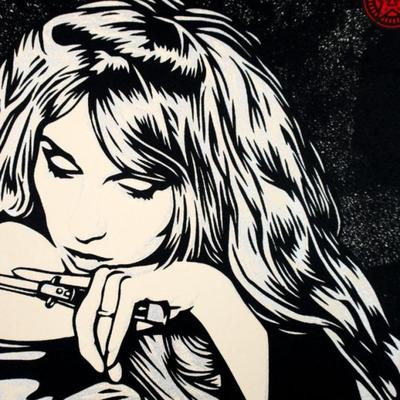
Artist: Niagra x Shepard Fairey Title: Tomorrows Another Night - Red Edition Type: 3-Color Screen Print on 320gsm Natural Coventry Rag Vellum Size: 18 x 24 Inches Release: July 02, 2021 Print comes signed, numbered and with a Certificate of Authenticity. About This Art: For Tomorrows Another Night I chose an image of Ron and Niagara where I think they both look amazing, but there was a nice balance between in-your-face aggression with Rons pose making eye contact holding his fist up, and Niagaras seemingly demure embrace of Ron, but anyone who knows Niagara understands that though she may look sedate, shes pulling the strings. I added a switchblade that she is caressing with her finger, as a way to amplify her femme fatale chic, and because I thought it lent itself to my original idea of a title Bonnie & Clyde Were Lightweights. - Shepard Fairey Shepards images of us are done so well. Its not easy to get to the essence and Shepard has honed his powers to perfection. Ive also always loved doing collages and inking. For Shepards image background, I only used Destroy All Monsters or Dark Carnivals real press & vintage flyers. I just grabbed a couple handfuls & combed through, cut out, glued down and passed out. - Niagara -

LIMITED EDITION signed by Felix Anudike-Uzomah. Get this awesome collectible acrylic souvenir of this historic Chiefs playoff game! Produced exclusively for Chiefs Bids! STOCK IMAGES MAY BE USED FOR AUTOGRAPHED ITEMS. Buyer will be charged shipping. ALL TRANSACTIONS FINAL. Items will be shipped within 10 business days. Signatures are verified by either a certificate or sticker authentication. -
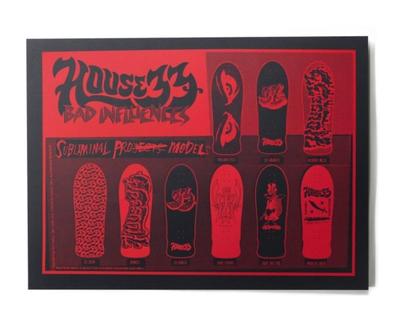
HOUSE33: SHOW PRINT (Red on Black), 2021 Screen Print. 18 x 24 in. Ed. 33 The driving principle of Subliminal Projects is that art should be accessible to everyone and that art can come from many different perspectives and cultural niches. Good art is good art, whether its done on an album cover, a skateboard, canvas, or found cardboard. -

HOUSE33: SHOW PRINT (Red on Black), 2021 Screen Print. 18 x 24 in. Ed. 33 The driving principle of Subliminal Projects is that art should be accessible to everyone and that art can come from many different perspectives and cultural niches. Good art is good art, whether its done on an album cover, a skateboard, canvas, or found cardboard. -
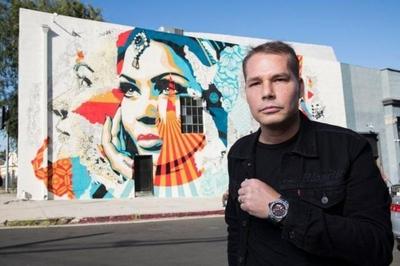
HOUSE33: SHOW PRINT (Red on Black), 2021 Screen Print. 18 x 24 in. Ed. 33 The driving principle of Subliminal Projects is that art should be accessible to everyone and that art can come from many different perspectives and cultural niches. Good art is good art, whether its done on an album cover, a skateboard, canvas, or found cardboard. -

Artist: Imbue Title: Virgin Gold Signed and numbered Limited Edition Of 500. Includes certificate of authenticity. From the 24 hour art club by Imbue. Size approx: 42 x 30 cm. Imbue jumped to fame as being one of the artist commissioned by Banksy to contribute to Dismaland in 2015. Ever since his work sells out in minutes. -
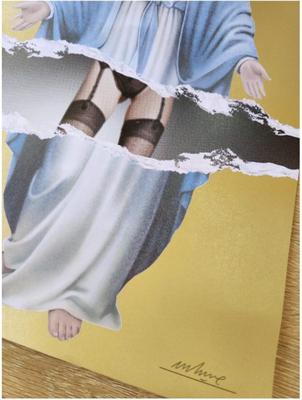
Artist: Imbue Title: Virgin Gold Signed and numbered Limited Edition Of 500. Includes certificate of authenticity. From the 24 hour art club by Imbue. Size approx: 42 x 30 cm. Imbue jumped to fame as being one of the artist commissioned by Banksy to contribute to Dismaland in 2015. Ever since his work sells out in minutes. -
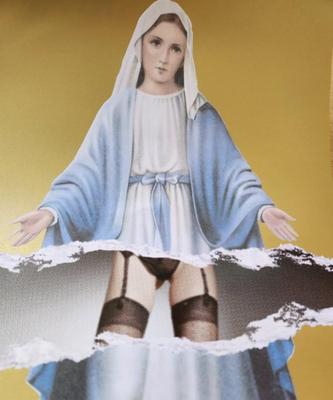
Artist: Imbue Title: Virgin Gold Signed and numbered Limited Edition Of 500. Includes certificate of authenticity. From the 24 hour art club by Imbue. Size approx: 42 x 30 cm. Imbue jumped to fame as being one of the artist commissioned by Banksy to contribute to Dismaland in 2015. Ever since his work sells out in minutes. -
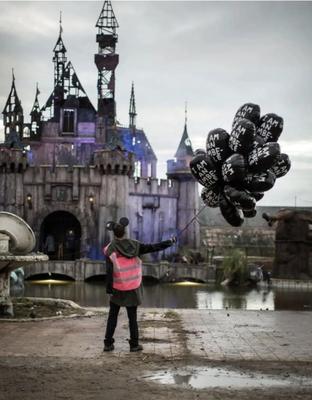
Artist: Imbue Title: Virgin Gold Signed and numbered Limited Edition Of 500. Includes certificate of authenticity. From the 24 hour art club by Imbue. Size approx: 42 x 30 cm. Imbue jumped to fame as being one of the artist commissioned by Banksy to contribute to Dismaland in 2015. Ever since his work sells out in minutes. -
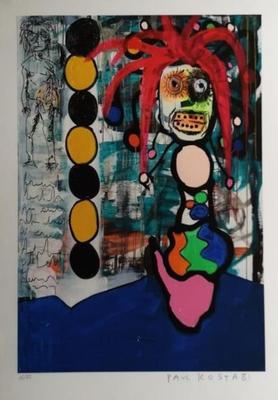
Paul Kostabi - Pancake Mountain Giclée - Hand signed edition of 75 61 x 43 cm Paul Kostabi ( 1962-) American artist, painter, sculptor, musician, music producer, and sound engineer. His artwork is on permanent display at the Guggenheim Museum in New York. His artwork is sometimes compared to Basquiat's. His brother, Mark Kostabi, a world-renowned painter, is a major figure in the new Pop Art style. -
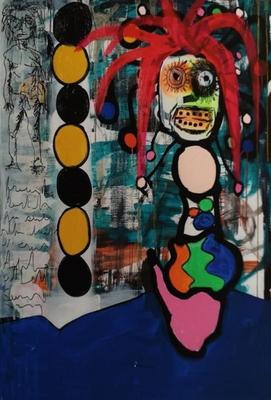
Paul Kostabi - Pancake Mountain Giclée - Hand signed edition of 75 61 x 43 cm Paul Kostabi ( 1962-) American artist, painter, sculptor, musician, music producer, and sound engineer. His artwork is on permanent display at the Guggenheim Museum in New York. His artwork is sometimes compared to Basquiat's. His brother, Mark Kostabi, a world-renowned painter, is a major figure in the new Pop Art style. -
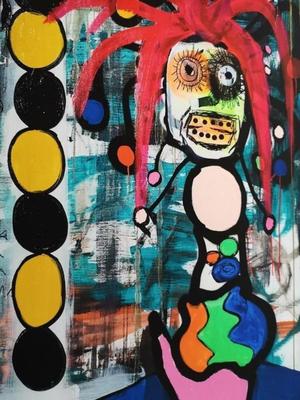
Paul Kostabi - Pancake Mountain Giclée - Hand signed edition of 75 61 x 43 cm Paul Kostabi ( 1962-) American artist, painter, sculptor, musician, music producer, and sound engineer. His artwork is on permanent display at the Guggenheim Museum in New York. His artwork is sometimes compared to Basquiat's. His brother, Mark Kostabi, a world-renowned painter, is a major figure in the new Pop Art style. -
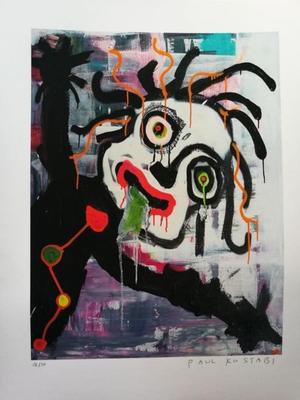
Paul Kostabi - Zonder Giclée - Hand signed Edition of 30 61 x 46.5 cm Paul Kostabi ( 1962-) American artist, painter, sculptor, musician, music producer, and sound engineer. His artwork is on permanent display at the Guggenheim Museum in New York. His artwork is sometimes compared to Basquiat's. His brother, Mark Kostabi, a world-renowned painter, is a major figure in the new Pop Art style.Signed in pencil -
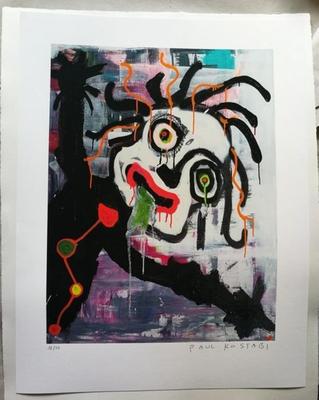
Paul Kostabi - Zonder Giclée - Hand signed Edition of 30 61 x 46.5 cm Paul Kostabi ( 1962-) American artist, painter, sculptor, musician, music producer, and sound engineer. His artwork is on permanent display at the Guggenheim Museum in New York. His artwork is sometimes compared to Basquiat's. His brother, Mark Kostabi, a world-renowned painter, is a major figure in the new Pop Art style.Signed in pencil -

Paul Kostabi - Zonder Giclée - Hand signed Edition of 30 61 x 46.5 cm Paul Kostabi ( 1962-) American artist, painter, sculptor, musician, music producer, and sound engineer. His artwork is on permanent display at the Guggenheim Museum in New York. His artwork is sometimes compared to Basquiat's. His brother, Mark Kostabi, a world-renowned painter, is a major figure in the new Pop Art style.Signed in pencil -

Benny The Kid (XX-XXI) - Pharaonic Mixed media - Hand signed, artist's stamp - 2019 Artwork made in France by the artist BENNY THE KID Unique and original artwork. Title: Pharaonic Size: 30 x 30 cm Year 2019 Signed front & back Spray paint, stencil and collage with recycled cardboard on canvas board. Born in 1982, artist now recognized and referenced, Benny the kid uses different techniques, spray paint, acrylic paint, stencils, watercolours, etc. -
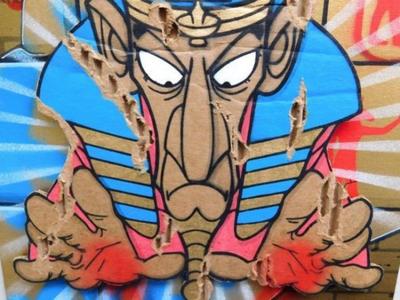
Benny The Kid (XX-XXI) - Pharaonic Mixed media - Hand signed, artist's stamp - 2019 Artwork made in France by the artist BENNY THE KID Unique and original artwork. Title: Pharaonic Size: 30 x 30 cm Year 2019 Signed front & back Spray paint, stencil and collage with recycled cardboard on canvas board. Born in 1982, artist now recognized and referenced, Benny the kid uses different techniques, spray paint, acrylic paint, stencils, watercolours, etc. -
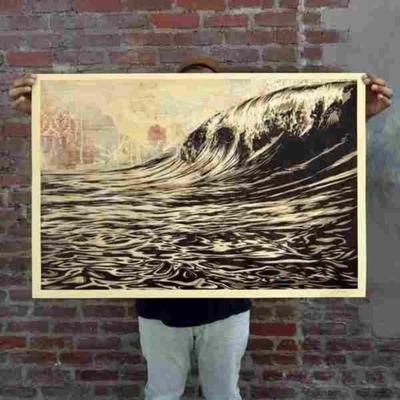
Artist: Shepard Fairey Title: DARK WAVE SIGNED OFFSET LITHOGRAPH 24 x 36 inches. Offset Lithograph on thick cream Speckle Tone paper. Signed by Shepard Fairey. Note from Artist: I first illustrated the Dark Wave piece in 2010 as a response to the BP spill in the Gulf of Mexico. I made some fine art pieces of the image that I liked even more than the screen prints and decided Id like to release an offset of the fine art version. I am releasing this both because I like the image, and because unfortunately, the environmental hazards of off-shore drilling are just as relevant today as they were in 2010, especially with the relaxed regulations under the new administration. I enjoy doing illustrations of water with its hypnotic ripples and reflections. Theres oil in this water, which mixes ok in an illustration, but not so well in real life. I want future generations to inhabit a livable planet. -
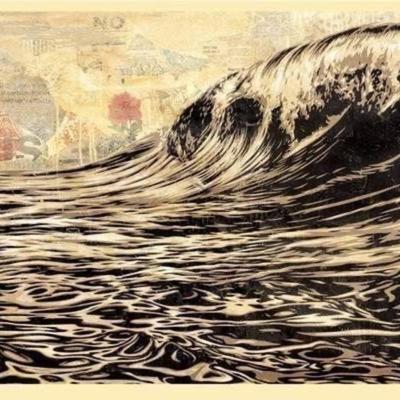
Artist: Shepard Fairey Title: DARK WAVE SIGNED OFFSET LITHOGRAPH 24 x 36 inches. Offset Lithograph on thick cream Speckle Tone paper. Signed by Shepard Fairey. Note from Artist: I first illustrated the Dark Wave piece in 2010 as a response to the BP spill in the Gulf of Mexico. I made some fine art pieces of the image that I liked even more than the screen prints and decided Id like to release an offset of the fine art version. I am releasing this both because I like the image, and because unfortunately, the environmental hazards of off-shore drilling are just as relevant today as they were in 2010, especially with the relaxed regulations under the new administration. I enjoy doing illustrations of water with its hypnotic ripples and reflections. Theres oil in this water, which mixes ok in an illustration, but not so well in real life. I want future generations to inhabit a livable planet. -

Artist: Shepard Fairey Title: DARK WAVE SIGNED OFFSET LITHOGRAPH 24 x 36 inches. Offset Lithograph on thick cream Speckle Tone paper. Signed by Shepard Fairey. Note from Artist: I first illustrated the Dark Wave piece in 2010 as a response to the BP spill in the Gulf of Mexico. I made some fine art pieces of the image that I liked even more than the screen prints and decided Id like to release an offset of the fine art version. I am releasing this both because I like the image, and because unfortunately, the environmental hazards of off-shore drilling are just as relevant today as they were in 2010, especially with the relaxed regulations under the new administration. I enjoy doing illustrations of water with its hypnotic ripples and reflections. Theres oil in this water, which mixes ok in an illustration, but not so well in real life. I want future generations to inhabit a livable planet. -
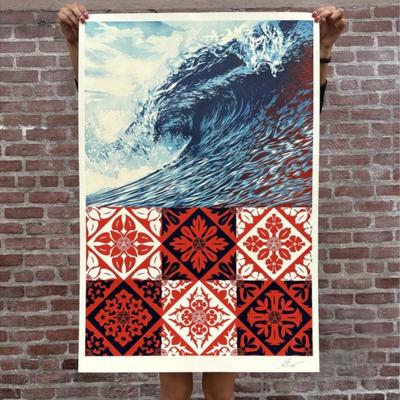
Artist: Shepard Fairey Title: WAVE OF DISTRESS SIGNED OFFSET LITHOGRAPH 24 x 36 inches. Offset Lithograph on thick cream Speckle Tone paper. Signed by Shepard Fairey. Note from Artist: I first illustrated the Dark Wave piece in 2010 as a response to the BP spill in the Gulf of Mexico. I made some fine art pieces of the image that I liked even more than the screen prints and decided Id like to release an offset of the fine art version. I am releasing this both because I like the image, and because unfortunately, the environmental hazards of off-shore drilling are just as relevant today as they were in 2010, especially with the relaxed regulations under the new administration. I enjoy doing illustrations of water with its hypnotic ripples and reflections. Theres oil in this water, which mixes ok in an illustration, but not so well in real life. I want future generations to inhabit a livable planet. -
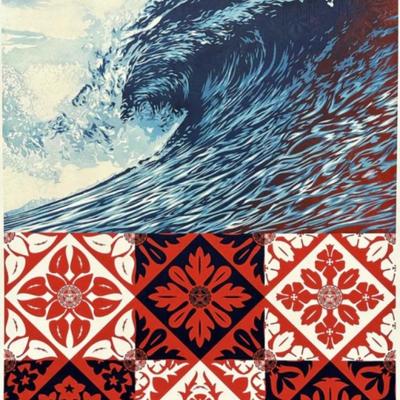
Artist: Shepard Fairey Title: WAVE OF DISTRESS SIGNED OFFSET LITHOGRAPH 24 x 36 inches. Offset Lithograph on thick cream Speckle Tone paper. Signed by Shepard Fairey. Note from Artist: I first illustrated the Dark Wave piece in 2010 as a response to the BP spill in the Gulf of Mexico. I made some fine art pieces of the image that I liked even more than the screen prints and decided Id like to release an offset of the fine art version. I am releasing this both because I like the image, and because unfortunately, the environmental hazards of off-shore drilling are just as relevant today as they were in 2010, especially with the relaxed regulations under the new administration. I enjoy doing illustrations of water with its hypnotic ripples and reflections. Theres oil in this water, which mixes ok in an illustration, but not so well in real life. I want future generations to inhabit a livable planet. -

Artist: Shepard Fairey Title: WAVE OF DISTRESS SIGNED OFFSET LITHOGRAPH 24 x 36 inches. Offset Lithograph on thick cream Speckle Tone paper. Signed by Shepard Fairey. Note from Artist: I first illustrated the Dark Wave piece in 2010 as a response to the BP spill in the Gulf of Mexico. I made some fine art pieces of the image that I liked even more than the screen prints and decided Id like to release an offset of the fine art version. I am releasing this both because I like the image, and because unfortunately, the environmental hazards of off-shore drilling are just as relevant today as they were in 2010, especially with the relaxed regulations under the new administration. I enjoy doing illustrations of water with its hypnotic ripples and reflections. Theres oil in this water, which mixes ok in an illustration, but not so well in real life. I want future generations to inhabit a livable planet. -

TARGET EXCEPTIONS Signed Offset Lithograph. My Target Exceptions print addresses the challenges of both visiting and becoming a resident of the United States for many people. As it turns out, there are various target criteria that make a person an ideal candidate to immigrate, but most people who might long to fulfill the “American Dream” are exceptions to the target qualifications, especially considering the attitudes and attempted policies of the current administration. 24 x 36 inches. Offset Lithograph on thick cream Speckle Tone paper. Signed by Shepard Fairey. Open Edition. -

Artist: Shepard Fairey Title: OBEY 3-FACE COLLAGE Size: 18 X 24 inches Signed Offset Lithograph Set. Offset lithograph set of 3 prints on cream Speckle Tone paper. Each print signed by Shepard Fairey. Expanding on the legacies of artists such as Keith Haring and Andy Warhol, Shepard Faireys practice disrupts the distinction between fine and commercial art. A major artist of the street art movement, Fairey rose to prominence in the early 1990s through the dispersion of posters, stickers, and murals, related to his Obey Giant campaign, which yielded an international cultural phenomenon. Faireys iconic poster of President Barack Obama was adopted as the official emblem associated with the presidential campaign and encapsulates a number of recurring concerns in the artists work, including propaganda, portraiture, and political power. -
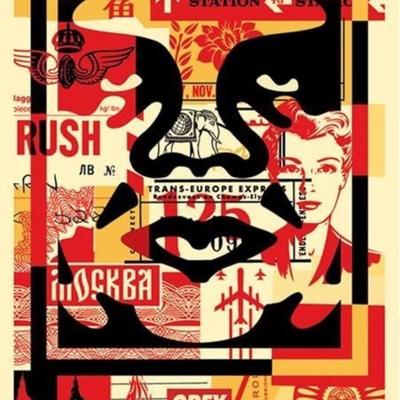
Artist: Shepard Fairey Title: OBEY 3-FACE COLLAGE Size: 18 X 24 inches Signed Offset Lithograph Set. Offset lithograph set of 3 prints on cream Speckle Tone paper. Each print signed by Shepard Fairey. Expanding on the legacies of artists such as Keith Haring and Andy Warhol, Shepard Faireys practice disrupts the distinction between fine and commercial art. A major artist of the street art movement, Fairey rose to prominence in the early 1990s through the dispersion of posters, stickers, and murals, related to his Obey Giant campaign, which yielded an international cultural phenomenon. Faireys iconic poster of President Barack Obama was adopted as the official emblem associated with the presidential campaign and encapsulates a number of recurring concerns in the artists work, including propaganda, portraiture, and political power. -
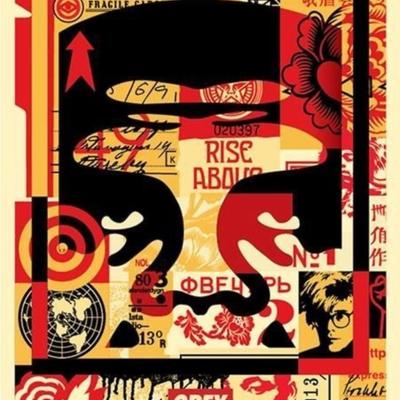
Artist: Shepard Fairey Title: OBEY 3-FACE COLLAGE Size: 18 X 24 inches Signed Offset Lithograph Set. Offset lithograph set of 3 prints on cream Speckle Tone paper. Each print signed by Shepard Fairey. Expanding on the legacies of artists such as Keith Haring and Andy Warhol, Shepard Faireys practice disrupts the distinction between fine and commercial art. A major artist of the street art movement, Fairey rose to prominence in the early 1990s through the dispersion of posters, stickers, and murals, related to his Obey Giant campaign, which yielded an international cultural phenomenon. Faireys iconic poster of President Barack Obama was adopted as the official emblem associated with the presidential campaign and encapsulates a number of recurring concerns in the artists work, including propaganda, portraiture, and political power. -
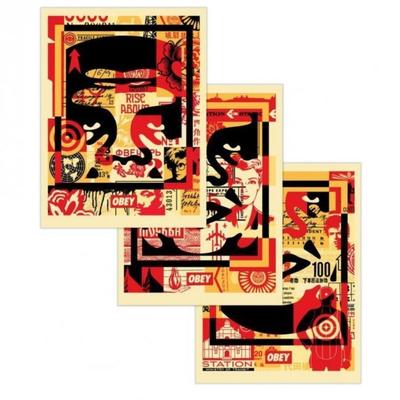
Artist: Shepard Fairey Title: OBEY 3-FACE COLLAGE Size: 18 X 24 inches Signed Offset Lithograph Set. Offset lithograph set of 3 prints on cream Speckle Tone paper. Each print signed by Shepard Fairey. Expanding on the legacies of artists such as Keith Haring and Andy Warhol, Shepard Faireys practice disrupts the distinction between fine and commercial art. A major artist of the street art movement, Fairey rose to prominence in the early 1990s through the dispersion of posters, stickers, and murals, related to his Obey Giant campaign, which yielded an international cultural phenomenon. Faireys iconic poster of President Barack Obama was adopted as the official emblem associated with the presidential campaign and encapsulates a number of recurring concerns in the artists work, including propaganda, portraiture, and political power. -

Artist: Shepard Fairey Title: OBEY 3-FACE COLLAGE Size: 18 X 24 inches Signed Offset Lithograph Set. Offset lithograph set of 3 prints on cream Speckle Tone paper. Each print signed by Shepard Fairey. Expanding on the legacies of artists such as Keith Haring and Andy Warhol, Shepard Faireys practice disrupts the distinction between fine and commercial art. A major artist of the street art movement, Fairey rose to prominence in the early 1990s through the dispersion of posters, stickers, and murals, related to his Obey Giant campaign, which yielded an international cultural phenomenon. Faireys iconic poster of President Barack Obama was adopted as the official emblem associated with the presidential campaign and encapsulates a number of recurring concerns in the artists work, including propaganda, portraiture, and political power. -
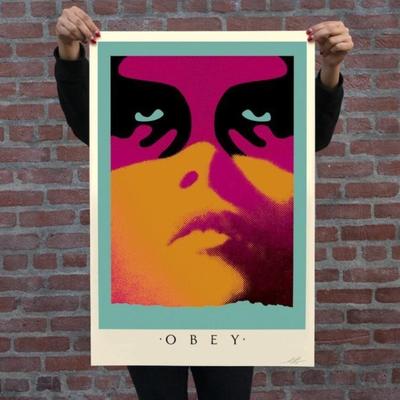
Artist: Shepard Fairey Title: Shadowplay 24 x 36 inches Offset on thick cream Speckletone paper. Signed by Shepard Fairey. Expanding on the legacies of artists such as Keith Haring and Andy Warhol, Shepard Faireys practice disrupts the distinction between fine and commercial art. A major artist of the street art movement, Fairey rose to prominence in the early 1990s through the dispersion of posters, stickers, and murals, related to his Obey Giant campaign, which yielded an international cultural phenomenon. Faireys iconic poster of President Barack Obama was adopted as the official emblem associated with the presidential campaign and encapsulates a number of recurring concerns in the artists work, including propaganda, portraiture, and political power. -

Artist: Shepard Fairey Title: Shadowplay 24 x 36 inches Offset on thick cream Speckletone paper. Signed by Shepard Fairey. Expanding on the legacies of artists such as Keith Haring and Andy Warhol, Shepard Faireys practice disrupts the distinction between fine and commercial art. A major artist of the street art movement, Fairey rose to prominence in the early 1990s through the dispersion of posters, stickers, and murals, related to his Obey Giant campaign, which yielded an international cultural phenomenon. Faireys iconic poster of President Barack Obama was adopted as the official emblem associated with the presidential campaign and encapsulates a number of recurring concerns in the artists work, including propaganda, portraiture, and political power. -
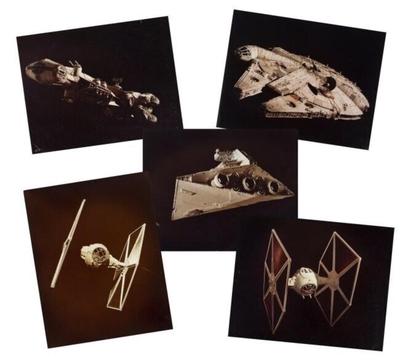
A set of nine 16x20 full-color original prints featuring photos of models used in Star Wars (20th Century Fox, 1977), photographed by Jack Warford on set during the production of the film. Warford, a Magnum photographer, was hired by George Mather and Gary Kurtz to photograph all of the principal starship models on set during the production of the film and was given permission to make prints of his work. All photography was done by Warford with his 4x5 Linhoff camera, and the prints have been in dark storage since 1977. Some of his work was used in marketing, promotion, and on merchandise with the release of the original film, and some have never before been published.

This lot is for a set of 9 full-color original prints from the estate of Jack Warford, photographer Prints (all 16x20) include one Millennium Falcon, one Blockade Runner, three X-Wing Fighter, one Star Destroyer pursuing Blockage Runner, one Y-Wing Fighter, and two Tie Fighter. This collection of photography come from The Estate of Jack Warford (10/27/1932 - 04/25/2018), who lead a successful fine art photography career in Hollywood with his wife Sue (both Magnum photographers). Warford had made a mark on Star Wars (20th Century Fox, 1977) with his stunning photography work, shooting the iconic starship models on set and during production with his 4x5 Linhoff camera for Gary Kurtz. Some of his work would be very familiar to fans, as it appeared in some of the mass marketing of toys and books for the original film. However, his story has never been told and credit for his work is unknown to the masses. In preface of his work that is part of this auction, we have provided Mr. Warford an opportunity to share his story with fans, which has never been published before, in his own words. When The Force Was With Me By Jack Warford George Mather was a good friend of mine. He was a general, all-around film person who belonged to Screen Actor's Guild and the Directors Guild, was occasionally a non-union cinematographer and usually had his fingers in more pies than Little Jack Horner. When he needed a photographer, he called me, whether it was to shoot a casting portfolio of his current girlfriend, and he had a lot of those, or to do working portraits of all the staff members of an entire studio. On one particular occasion, he called to see if I would be free on a certain Sunday in 1977 to take some pictures of some models. I had photographed many models for their portfolios, for ads, and I was a staff photographer for the short-lived fashion magazine, California Girl, so I said Sure. He told me to call Gary Kurtz, the producer of this picture he was working on for details. I did. It seems that the models in question were not the breathing, posing, photogenic female kind, but models of space ships for a science fiction movie shooting at this rented barn near the Van Nuys Airport that had been dubbed Industrial Light and Magic. The pictures were to be for publicity and promotion. I calculated a price for that and agreed at five hundred for the afternoon. When I arrived at the studio, accompanied by my wife, Sue, and my next door neighbors, Tom and Peggy Marks, who had been invited to come and watch by George, we were given coffee and the grand tour of the works in progress by John Dykstra, the special photographic effects supervisor. The model makers had been having such a wonderful time building the space ships that they had fallen behind in production and schedule and were over budget. When George was hired as production manager and whip cracker, only one shot had been completed, the shot of the pod with C3PO and R2D2 (named for a roll of magnetic tape, roll 2, dialog 2) blasting down to the planet below from the blockade runner. The part of the movie with the live action had been completed months before and the actors had all gone home. The Millennium Falcon that had served for a set in England for the actors, only showing a quarter of the whole ship, had cost less than a third of the three foot diameter model used by Industrial Light and Magic, henceforth referred to as ILM, for the full-body shots in action. On the day we arrived, they had just finished what turned out to be the opening shot of the movie. The three-foot long model of the Imperial Cruiser was upside down on a plexiglass pedestal with a blue neon light inside chasing a two inch model of the blockade runner. For the reverse shots of the blockade runner, carrying Princess Leah and the two droids, they used the largest model they made, being over six feet long. In some photographic processes, called Blue Screen, blue will disappear, and it is easy to strip in another piece of film. It goes back to the dawn of movies, in The Great Train Robbery when the train comes rolling by the open window in the telegraph office. If you cover an actor's face and hands in blue, presto, the invisible man. It explains why newscasters can never wear blue shirts. John showed me the setup of the shot they had just taken. The camera was mounted on a dolly running on railroad tracks beside the models and the wide angle lens was only a couple inches above the model as the computer oozed it by very slowly. Nearby was a monitor. He turned it on. The picture was in black and white negative, inverted so you were looking at it from underneath instead of above. The tiny blockade runner flashed across the screen and then the imperial cruiser came by. It kept coming. It still kept coming until it passed by and the engines were visible I was completely blown away. You just got my three bucks, (the cost of a movie ticket then) I said. In most, if not all, of the shots of the ships, it was the camera that moved in a predetermined path, operated by instructions from a computer, not the ships. Backgrounds would be added later along with the blasts from the engines. ILM had made a deal with a Japanese model maker to send them all the rejects of their model cars or whatever. For example, where the mandibles or jaws of the Millennium Falcon join the main body between the upper and lower plates, you can see the oil pan and transmission of a model Mercedes Benz. The sprues that held the plastic parts together during the casting were put to work as piping. The model makers at ILM had a wonderful time playing, as evidenced by the missing plate on the Millennium falcon with a skeleton curled up inside that no one would ever see - one of the reasons George Mather was called in as expediter. It was time to go to work. Gary Kurtz showed me the different models he wanted shot - the Millennium Falcon, several different X-wing fighters, some Y-wing fighters, the set up shot with the tiny blockade runner and the Imperial Cruiser, the full size blockade runner, used in reverse shots of the interception, which was the largest model they had made, being over six feet long, and some surface shots of various scales of the surface of the Death Star to use as backgrounds. Whatever lighting I needed would be provided. Since this was supposed to be outer space where there is no atmosphere to diffuse the light, I used one large floodlight for a single source with no fill, as if the model were lit by a nearby star. I set up my Linhoff 4 X 5 camera, using a six-inch Golden Dagor lens, about as fine a photographic setup as is available. After setting up each shot as if the ships were in action, not merely static models, I called in Gary to take a look at the lighting and setup before I tripped the shutter. One shot I was particularly proud of was of an X-wing fighter, front on with one laser on a wingtip pointed right at the camera. This shot was the one that wound up on lunch buckets, game box covers, and t-shirts as well as publicity shots and posters and may have been the most published photograph of 1977. An animated copy showed up in the Star Wars computer game. The next day, I took the Ektacolor negatives to Spectra Color Lab in Burbank. My wife and I were going out of town on a shoot, so we arranged to have the negs and the contact proofs picked up. Upon our return, I called George. He said he was appalled I rushed to his office to take a look and some of the shots had blue flashes on them, something I had never seen before. I found out this was caused by the high degree of static electricity at the studio that made sparks when the dark slides were pulled out of the film holders. I called Gary Kurtz, apologizing and offering to do a reshoot. He said the pictures were just fine and since the images would be stripped out and stuck on starfield or Death Star backgrounds, there would be no problems since most of the flashes were not on the ships bodies and the others could easily be taken out. I asked Gary Kurtz if I could borrow the negatives and make some prints With Gary's blessing, I made several copies of each of what I considered to be the best shots, mostly in 16 X 20 with a few 8 X 10s. It would be awhile before I heard from Lucasfilm again. And then when I did it was an invitation to the cast and crew screening of Star Wars, not THE Star Wars as it was under the shooting title, at the Directors Guild Theater on Wilshire Boulevard, lunch to follow at Dr. Munchie's. George and Marcia Lucas had just finished editing the film, and no one else had seen so much as a working print. It was not Episode IV, A New Hope, but just Star Wars. There was no scene between Han Solo and Jabba the Hut; that would be added later. There was a burst of applause from the cast and crew on the opening shot that I described, another when the modified elephants made up like bantas appeared and when the stars took on a Doppler effect as the Millennium Falcon jumped into faster than light speed. When the lights came on, it was plain that the audience was more than pleased with what they had done, Almost everyone, that is. The feeling was jubilant, Mark Hamil was surrounded by a heard of friends and relatives, but as the theater emptied, Harrison Ford, shoulders hunched, hands in pockets, staring at the floor in front of him, slouched down the aisle very much the loner wearing a cloud of gloom. Wearing our May the Force Be With You buttons that had been passed out as we walked in, we proceeded to Dr. Munchies where we were adequately wined and dined. After eating, Sue and I were sitting on some steps talking to John Dykstra when Harrison Ford ambled up, still wearing his dark cloud. He had enjoyed maybe one too many glasses of wine. I asked him why he was so depressed. He replied that he hadn't worked as a actor in nine months since the live action was finished and he didn't know if he would ever work again. We all tried to cheer him up in vain. He was convinced this was the bottom point in his life and his career. We all know he did work again, quite a few times and the world may have gained a movie star, but it lost a wonderful carpenter. A few days later the film opened and was an immediate smash hit. My pictures, uncredited, were splashed all over Time magazine that called it The best film of the year. The edition of Newsweek put the first thorns in my side, when my pictures were credited to Richard Edlund, the special effects cinematographer.I wrote a letter to Gary Kurtz suggesting that I put out a special edition of signed and numbered photographs I heard from Lucasfilm asking if I thought they should get a slice of the pie, to which I agreed, and I later heard from Fox that I should forget the whole idea. At least I had the prints I had made for myself. Another thorn appeared when I found my photographs used on lunch buckets, t-shirts, and games, and all sorts of ancillary items going along with the movie. Another was to see a set of three fighters made from the same image with that tell-tale electric blue splash on their sides advertising Nikkor lenses. The original agreement was for publicity and promotion and this was going way beyond that. Star Wars may have been shot with Nikkor lenses, but the illustration was not. I called Gary Kurtz to complain. I was informed that everyone who worked for ILM was an employee whether for one day or the whole run and the product of their labors with all rights was the property of Lucasfilm/Twentieth Century Fox. Oh, yeah? If I was an employee instead of an independent contractor, where was my W-2 form? It was time to call a lawyer. It would seem that according to copyright laws, while the image may belong to the creator, the rendering belongs to the photographer. In the course of the lawsuit amidst depositions, questions and answers, there were some numbers discovered on the edge of the negatives. No one had the faintest idea what they were for. Richard Edllund excluded the photos of the surface of the Death Star and such as had blue static electricity streaks and claimed all the rest as his. My attorney was not an intellectual properties lawyer and did not cut me the best settlement. While the financial settlement was about what I would have been paid if I had collected what I should have plus the lawyer's cut, the credits went to Richard Edlund and all rights went to Lucasfillm/Twentieth Century Fox. A man who became one of my closest friends and was an intellectual properties lawyer and he claims he would have cut a much more attractive deal, that would have included penalties for copyright violation. We did eventually discover the reason for the numbers on the edge of the negatives, they were placed there by the photo lab that processed them in the first place. Those numbers were on the photos Edlund conceded were mine. They were also on the rest of the photos I claimed as mine and Edlund claimed as his, proving rather conclusively that they were mine, but that is not part of the official settlement. So, I had the money, but no credits and no rights. I did, however, have the prints I had made with Gary Kurtz blessing. I gave a few away and the rest lay in an Ektacolor paper box for the next thirty three years. Jack Warford -

A set of nine 16x20 full-color original prints featuring photos of models used in Star Wars (20th Century Fox, 1977), photographed by Jack Warford on set during the production of the film. Warford, a Magnum photographer, was hired by George Mather and Gary Kurtz to photograph all of the principal starship models on set during the production of the film and was given permission to make prints of his work. All photography was done by Warford with his 4x5 Linhoff camera, and the prints have been in dark storage since 1977. Some of his work was used in marketing, promotion, and on merchandise with the release of the original film, and some have never before been published.

This lot is for a set of 9 full-color original prints from the estate of Jack Warford, photographer Prints (all 16x20) include one Millennium Falcon, one Blockade Runner, three X-Wing Fighter, one Star Destroyer pursuing Blockage Runner, one Y-Wing Fighter, and two Tie Fighter. This collection of photography come from The Estate of Jack Warford (10/27/1932 - 04/25/2018), who lead a successful fine art photography career in Hollywood with his wife Sue (both Magnum photographers). Warford had made a mark on Star Wars (20th Century Fox, 1977) with his stunning photography work, shooting the iconic starship models on set and during production with his 4x5 Linhoff camera for Gary Kurtz. Some of his work would be very familiar to fans, as it appeared in some of the mass marketing of toys and books for the original film. However, his story has never been told and credit for his work is unknown to the masses. In preface of his work that is part of this auction, we have provided Mr. Warford an opportunity to share his story with fans, which has never been published before, in his own words. When The Force Was With Me By Jack Warford George Mather was a good friend of mine. He was a general, all-around film person who belonged to Screen Actor's Guild and the Directors Guild, was occasionally a non-union cinematographer and usually had his fingers in more pies than Little Jack Horner. When he needed a photographer, he called me, whether it was to shoot a casting portfolio of his current girlfriend, and he had a lot of those, or to do working portraits of all the staff members of an entire studio. On one particular occasion, he called to see if I would be free on a certain Sunday in 1977 to take some pictures of some models. I had photographed many models for their portfolios, for ads, and I was a staff photographer for the short-lived fashion magazine, California Girl, so I said Sure. He told me to call Gary Kurtz, the producer of this picture he was working on for details. I did. It seems that the models in question were not the breathing, posing, photogenic female kind, but models of space ships for a science fiction movie shooting at this rented barn near the Van Nuys Airport that had been dubbed Industrial Light and Magic. The pictures were to be for publicity and promotion. I calculated a price for that and agreed at five hundred for the afternoon. When I arrived at the studio, accompanied by my wife, Sue, and my next door neighbors, Tom and Peggy Marks, who had been invited to come and watch by George, we were given coffee and the grand tour of the works in progress by John Dykstra, the special photographic effects supervisor. The model makers had been having such a wonderful time building the space ships that they had fallen behind in production and schedule and were over budget. When George was hired as production manager and whip cracker, only one shot had been completed, the shot of the pod with C3PO and R2D2 (named for a roll of magnetic tape, roll 2, dialog 2) blasting down to the planet below from the blockade runner. The part of the movie with the live action had been completed months before and the actors had all gone home. The Millennium Falcon that had served for a set in England for the actors, only showing a quarter of the whole ship, had cost less than a third of the three foot diameter model used by Industrial Light and Magic, henceforth referred to as ILM, for the full-body shots in action. On the day we arrived, they had just finished what turned out to be the opening shot of the movie. The three-foot long model of the Imperial Cruiser was upside down on a plexiglass pedestal with a blue neon light inside chasing a two inch model of the blockade runner. For the reverse shots of the blockade runner, carrying Princess Leah and the two droids, they used the largest model they made, being over six feet long. In some photographic processes, called Blue Screen, blue will disappear, and it is easy to strip in another piece of film. It goes back to the dawn of movies, in The Great Train Robbery when the train comes rolling by the open window in the telegraph office. If you cover an actor's face and hands in blue, presto, the invisible man. It explains why newscasters can never wear blue shirts. John showed me the setup of the shot they had just taken. The camera was mounted on a dolly running on railroad tracks beside the models and the wide angle lens was only a couple inches above the model as the computer oozed it by very slowly. Nearby was a monitor. He turned it on. The picture was in black and white negative, inverted so you were looking at it from underneath instead of above. The tiny blockade runner flashed across the screen and then the imperial cruiser came by. It kept coming. It still kept coming until it passed by and the engines were visible I was completely blown away. You just got my three bucks, (the cost of a movie ticket then) I said. In most, if not all, of the shots of the ships, it was the camera that moved in a predetermined path, operated by instructions from a computer, not the ships. Backgrounds would be added later along with the blasts from the engines. ILM had made a deal with a Japanese model maker to send them all the rejects of their model cars or whatever. For example, where the mandibles or jaws of the Millennium Falcon join the main body between the upper and lower plates, you can see the oil pan and transmission of a model Mercedes Benz. The sprues that held the plastic parts together during the casting were put to work as piping. The model makers at ILM had a wonderful time playing, as evidenced by the missing plate on the Millennium falcon with a skeleton curled up inside that no one would ever see - one of the reasons George Mather was called in as expediter. It was time to go to work. Gary Kurtz showed me the different models he wanted shot - the Millennium Falcon, several different X-wing fighters, some Y-wing fighters, the set up shot with the tiny blockade runner and the Imperial Cruiser, the full size blockade runner, used in reverse shots of the interception, which was the largest model they had made, being over six feet long, and some surface shots of various scales of the surface of the Death Star to use as backgrounds. Whatever lighting I needed would be provided. Since this was supposed to be outer space where there is no atmosphere to diffuse the light, I used one large floodlight for a single source with no fill, as if the model were lit by a nearby star. I set up my Linhoff 4 X 5 camera, using a six-inch Golden Dagor lens, about as fine a photographic setup as is available. After setting up each shot as if the ships were in action, not merely static models, I called in Gary to take a look at the lighting and setup before I tripped the shutter. One shot I was particularly proud of was of an X-wing fighter, front on with one laser on a wingtip pointed right at the camera. This shot was the one that wound up on lunch buckets, game box covers, and t-shirts as well as publicity shots and posters and may have been the most published photograph of 1977. An animated copy showed up in the Star Wars computer game. The next day, I took the Ektacolor negatives to Spectra Color Lab in Burbank. My wife and I were going out of town on a shoot, so we arranged to have the negs and the contact proofs picked up. Upon our return, I called George. He said he was appalled I rushed to his office to take a look and some of the shots had blue flashes on them, something I had never seen before. I found out this was caused by the high degree of static electricity at the studio that made sparks when the dark slides were pulled out of the film holders. I called Gary Kurtz, apologizing and offering to do a reshoot. He said the pictures were just fine and since the images would be stripped out and stuck on starfield or Death Star backgrounds, there would be no problems since most of the flashes were not on the ships bodies and the others could easily be taken out. I asked Gary Kurtz if I could borrow the negatives and make some prints With Gary's blessing, I made several copies of each of what I considered to be the best shots, mostly in 16 X 20 with a few 8 X 10s. It would be awhile before I heard from Lucasfilm again. And then when I did it was an invitation to the cast and crew screening of Star Wars, not THE Star Wars as it was under the shooting title, at the Directors Guild Theater on Wilshire Boulevard, lunch to follow at Dr. Munchie's. George and Marcia Lucas had just finished editing the film, and no one else had seen so much as a working print. It was not Episode IV, A New Hope, but just Star Wars. There was no scene between Han Solo and Jabba the Hut; that would be added later. There was a burst of applause from the cast and crew on the opening shot that I described, another when the modified elephants made up like bantas appeared and when the stars took on a Doppler effect as the Millennium Falcon jumped into faster than light speed. When the lights came on, it was plain that the audience was more than pleased with what they had done, Almost everyone, that is. The feeling was jubilant, Mark Hamil was surrounded by a heard of friends and relatives, but as the theater emptied, Harrison Ford, shoulders hunched, hands in pockets, staring at the floor in front of him, slouched down the aisle very much the loner wearing a cloud of gloom. Wearing our May the Force Be With You buttons that had been passed out as we walked in, we proceeded to Dr. Munchies where we were adequately wined and dined. After eating, Sue and I were sitting on some steps talking to John Dykstra when Harrison Ford ambled up, still wearing his dark cloud. He had enjoyed maybe one too many glasses of wine. I asked him why he was so depressed. He replied that he hadn't worked as a actor in nine months since the live action was finished and he didn't know if he would ever work again. We all tried to cheer him up in vain. He was convinced this was the bottom point in his life and his career. We all know he did work again, quite a few times and the world may have gained a movie star, but it lost a wonderful carpenter. A few days later the film opened and was an immediate smash hit. My pictures, uncredited, were splashed all over Time magazine that called it The best film of the year. The edition of Newsweek put the first thorns in my side, when my pictures were credited to Richard Edlund, the special effects cinematographer.I wrote a letter to Gary Kurtz suggesting that I put out a special edition of signed and numbered photographs I heard from Lucasfilm asking if I thought they should get a slice of the pie, to which I agreed, and I later heard from Fox that I should forget the whole idea. At least I had the prints I had made for myself. Another thorn appeared when I found my photographs used on lunch buckets, t-shirts, and games, and all sorts of ancillary items going along with the movie. Another was to see a set of three fighters made from the same image with that tell-tale electric blue splash on their sides advertising Nikkor lenses. The original agreement was for publicity and promotion and this was going way beyond that. Star Wars may have been shot with Nikkor lenses, but the illustration was not. I called Gary Kurtz to complain. I was informed that everyone who worked for ILM was an employee whether for one day or the whole run and the product of their labors with all rights was the property of Lucasfilm/Twentieth Century Fox. Oh, yeah? If I was an employee instead of an independent contractor, where was my W-2 form? It was time to call a lawyer. It would seem that according to copyright laws, while the image may belong to the creator, the rendering belongs to the photographer. In the course of the lawsuit amidst depositions, questions and answers, there were some numbers discovered on the edge of the negatives. No one had the faintest idea what they were for. Richard Edllund excluded the photos of the surface of the Death Star and such as had blue static electricity streaks and claimed all the rest as his. My attorney was not an intellectual properties lawyer and did not cut me the best settlement. While the financial settlement was about what I would have been paid if I had collected what I should have plus the lawyer's cut, the credits went to Richard Edlund and all rights went to Lucasfillm/Twentieth Century Fox. A man who became one of my closest friends and was an intellectual properties lawyer and he claims he would have cut a much more attractive deal, that would have included penalties for copyright violation. We did eventually discover the reason for the numbers on the edge of the negatives, they were placed there by the photo lab that processed them in the first place. Those numbers were on the photos Edlund conceded were mine. They were also on the rest of the photos I claimed as mine and Edlund claimed as his, proving rather conclusively that they were mine, but that is not part of the official settlement. So, I had the money, but no credits and no rights. I did, however, have the prints I had made with Gary Kurtz blessing. I gave a few away and the rest lay in an Ektacolor paper box for the next thirty three years. Jack Warford -
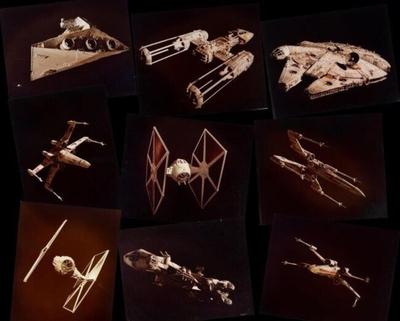
A set of nine 16x20 full-color original prints featuring photos of models used in Star Wars (20th Century Fox, 1977), photographed by Jack Warford on set during the production of the film. Warford, a Magnum photographer, was hired by George Mather and Gary Kurtz to photograph all of the principal starship models on set during the production of the film and was given permission to make prints of his work. All photography was done by Warford with his 4x5 Linhoff camera, and the prints have been in dark storage since 1977. Some of his work was used in marketing, promotion, and on merchandise with the release of the original film, and some have never before been published.

This lot is for a set of 9 full-color original prints from the estate of Jack Warford, photographer Prints (all 16x20) include one Millennium Falcon, one Blockade Runner, three X-Wing Fighter, one Star Destroyer pursuing Blockage Runner, one Y-Wing Fighter, and two Tie Fighter. This collection of photography come from The Estate of Jack Warford (10/27/1932 - 04/25/2018), who lead a successful fine art photography career in Hollywood with his wife Sue (both Magnum photographers). Warford had made a mark on Star Wars (20th Century Fox, 1977) with his stunning photography work, shooting the iconic starship models on set and during production with his 4x5 Linhoff camera for Gary Kurtz. Some of his work would be very familiar to fans, as it appeared in some of the mass marketing of toys and books for the original film. However, his story has never been told and credit for his work is unknown to the masses. In preface of his work that is part of this auction, we have provided Mr. Warford an opportunity to share his story with fans, which has never been published before, in his own words. When The Force Was With Me By Jack Warford George Mather was a good friend of mine. He was a general, all-around film person who belonged to Screen Actor's Guild and the Directors Guild, was occasionally a non-union cinematographer and usually had his fingers in more pies than Little Jack Horner. When he needed a photographer, he called me, whether it was to shoot a casting portfolio of his current girlfriend, and he had a lot of those, or to do working portraits of all the staff members of an entire studio. On one particular occasion, he called to see if I would be free on a certain Sunday in 1977 to take some pictures of some models. I had photographed many models for their portfolios, for ads, and I was a staff photographer for the short-lived fashion magazine, California Girl, so I said Sure. He told me to call Gary Kurtz, the producer of this picture he was working on for details. I did. It seems that the models in question were not the breathing, posing, photogenic female kind, but models of space ships for a science fiction movie shooting at this rented barn near the Van Nuys Airport that had been dubbed Industrial Light and Magic. The pictures were to be for publicity and promotion. I calculated a price for that and agreed at five hundred for the afternoon. When I arrived at the studio, accompanied by my wife, Sue, and my next door neighbors, Tom and Peggy Marks, who had been invited to come and watch by George, we were given coffee and the grand tour of the works in progress by John Dykstra, the special photographic effects supervisor. The model makers had been having such a wonderful time building the space ships that they had fallen behind in production and schedule and were over budget. When George was hired as production manager and whip cracker, only one shot had been completed, the shot of the pod with C3PO and R2D2 (named for a roll of magnetic tape, roll 2, dialog 2) blasting down to the planet below from the blockade runner. The part of the movie with the live action had been completed months before and the actors had all gone home. The Millennium Falcon that had served for a set in England for the actors, only showing a quarter of the whole ship, had cost less than a third of the three foot diameter model used by Industrial Light and Magic, henceforth referred to as ILM, for the full-body shots in action. On the day we arrived, they had just finished what turned out to be the opening shot of the movie. The three-foot long model of the Imperial Cruiser was upside down on a plexiglass pedestal with a blue neon light inside chasing a two inch model of the blockade runner. For the reverse shots of the blockade runner, carrying Princess Leah and the two droids, they used the largest model they made, being over six feet long. In some photographic processes, called Blue Screen, blue will disappear, and it is easy to strip in another piece of film. It goes back to the dawn of movies, in The Great Train Robbery when the train comes rolling by the open window in the telegraph office. If you cover an actor's face and hands in blue, presto, the invisible man. It explains why newscasters can never wear blue shirts. John showed me the setup of the shot they had just taken. The camera was mounted on a dolly running on railroad tracks beside the models and the wide angle lens was only a couple inches above the model as the computer oozed it by very slowly. Nearby was a monitor. He turned it on. The picture was in black and white negative, inverted so you were looking at it from underneath instead of above. The tiny blockade runner flashed across the screen and then the imperial cruiser came by. It kept coming. It still kept coming until it passed by and the engines were visible I was completely blown away. You just got my three bucks, (the cost of a movie ticket then) I said. In most, if not all, of the shots of the ships, it was the camera that moved in a predetermined path, operated by instructions from a computer, not the ships. Backgrounds would be added later along with the blasts from the engines. ILM had made a deal with a Japanese model maker to send them all the rejects of their model cars or whatever. For example, where the mandibles or jaws of the Millennium Falcon join the main body between the upper and lower plates, you can see the oil pan and transmission of a model Mercedes Benz. The sprues that held the plastic parts together during the casting were put to work as piping. The model makers at ILM had a wonderful time playing, as evidenced by the missing plate on the Millennium falcon with a skeleton curled up inside that no one would ever see - one of the reasons George Mather was called in as expediter. It was time to go to work. Gary Kurtz showed me the different models he wanted shot - the Millennium Falcon, several different X-wing fighters, some Y-wing fighters, the set up shot with the tiny blockade runner and the Imperial Cruiser, the full size blockade runner, used in reverse shots of the interception, which was the largest model they had made, being over six feet long, and some surface shots of various scales of the surface of the Death Star to use as backgrounds. Whatever lighting I needed would be provided. Since this was supposed to be outer space where there is no atmosphere to diffuse the light, I used one large floodlight for a single source with no fill, as if the model were lit by a nearby star. I set up my Linhoff 4 X 5 camera, using a six-inch Golden Dagor lens, about as fine a photographic setup as is available. After setting up each shot as if the ships were in action, not merely static models, I called in Gary to take a look at the lighting and setup before I tripped the shutter. One shot I was particularly proud of was of an X-wing fighter, front on with one laser on a wingtip pointed right at the camera. This shot was the one that wound up on lunch buckets, game box covers, and t-shirts as well as publicity shots and posters and may have been the most published photograph of 1977. An animated copy showed up in the Star Wars computer game. The next day, I took the Ektacolor negatives to Spectra Color Lab in Burbank. My wife and I were going out of town on a shoot, so we arranged to have the negs and the contact proofs picked up. Upon our return, I called George. He said he was appalled I rushed to his office to take a look and some of the shots had blue flashes on them, something I had never seen before. I found out this was caused by the high degree of static electricity at the studio that made sparks when the dark slides were pulled out of the film holders. I called Gary Kurtz, apologizing and offering to do a reshoot. He said the pictures were just fine and since the images would be stripped out and stuck on starfield or Death Star backgrounds, there would be no problems since most of the flashes were not on the ships bodies and the others could easily be taken out. I asked Gary Kurtz if I could borrow the negatives and make some prints With Gary's blessing, I made several copies of each of what I considered to be the best shots, mostly in 16 X 20 with a few 8 X 10s. It would be awhile before I heard from Lucasfilm again. And then when I did it was an invitation to the cast and crew screening of Star Wars, not THE Star Wars as it was under the shooting title, at the Directors Guild Theater on Wilshire Boulevard, lunch to follow at Dr. Munchie's. George and Marcia Lucas had just finished editing the film, and no one else had seen so much as a working print. It was not Episode IV, A New Hope, but just Star Wars. There was no scene between Han Solo and Jabba the Hut; that would be added later. There was a burst of applause from the cast and crew on the opening shot that I described, another when the modified elephants made up like bantas appeared and when the stars took on a Doppler effect as the Millennium Falcon jumped into faster than light speed. When the lights came on, it was plain that the audience was more than pleased with what they had done, Almost everyone, that is. The feeling was jubilant, Mark Hamil was surrounded by a heard of friends and relatives, but as the theater emptied, Harrison Ford, shoulders hunched, hands in pockets, staring at the floor in front of him, slouched down the aisle very much the loner wearing a cloud of gloom. Wearing our May the Force Be With You buttons that had been passed out as we walked in, we proceeded to Dr. Munchies where we were adequately wined and dined. After eating, Sue and I were sitting on some steps talking to John Dykstra when Harrison Ford ambled up, still wearing his dark cloud. He had enjoyed maybe one too many glasses of wine. I asked him why he was so depressed. He replied that he hadn't worked as a actor in nine months since the live action was finished and he didn't know if he would ever work again. We all tried to cheer him up in vain. He was convinced this was the bottom point in his life and his career. We all know he did work again, quite a few times and the world may have gained a movie star, but it lost a wonderful carpenter. A few days later the film opened and was an immediate smash hit. My pictures, uncredited, were splashed all over Time magazine that called it The best film of the year. The edition of Newsweek put the first thorns in my side, when my pictures were credited to Richard Edlund, the special effects cinematographer.I wrote a letter to Gary Kurtz suggesting that I put out a special edition of signed and numbered photographs I heard from Lucasfilm asking if I thought they should get a slice of the pie, to which I agreed, and I later heard from Fox that I should forget the whole idea. At least I had the prints I had made for myself. Another thorn appeared when I found my photographs used on lunch buckets, t-shirts, and games, and all sorts of ancillary items going along with the movie. Another was to see a set of three fighters made from the same image with that tell-tale electric blue splash on their sides advertising Nikkor lenses. The original agreement was for publicity and promotion and this was going way beyond that. Star Wars may have been shot with Nikkor lenses, but the illustration was not. I called Gary Kurtz to complain. I was informed that everyone who worked for ILM was an employee whether for one day or the whole run and the product of their labors with all rights was the property of Lucasfilm/Twentieth Century Fox. Oh, yeah? If I was an employee instead of an independent contractor, where was my W-2 form? It was time to call a lawyer. It would seem that according to copyright laws, while the image may belong to the creator, the rendering belongs to the photographer. In the course of the lawsuit amidst depositions, questions and answers, there were some numbers discovered on the edge of the negatives. No one had the faintest idea what they were for. Richard Edllund excluded the photos of the surface of the Death Star and such as had blue static electricity streaks and claimed all the rest as his. My attorney was not an intellectual properties lawyer and did not cut me the best settlement. While the financial settlement was about what I would have been paid if I had collected what I should have plus the lawyer's cut, the credits went to Richard Edlund and all rights went to Lucasfillm/Twentieth Century Fox. A man who became one of my closest friends and was an intellectual properties lawyer and he claims he would have cut a much more attractive deal, that would have included penalties for copyright violation. We did eventually discover the reason for the numbers on the edge of the negatives, they were placed there by the photo lab that processed them in the first place. Those numbers were on the photos Edlund conceded were mine. They were also on the rest of the photos I claimed as mine and Edlund claimed as his, proving rather conclusively that they were mine, but that is not part of the official settlement. So, I had the money, but no credits and no rights. I did, however, have the prints I had made with Gary Kurtz blessing. I gave a few away and the rest lay in an Ektacolor paper box for the next thirty three years. Jack Warford -

Takashi Murakami- Pillow release by Kaikai Kiki designed by artist Madsaki, full size. SIZE: 60cm X 43cm Madaski: Born in Osaka in 1974 and relocated to New Jersey at a young age, MADSAKI graduated from the Parsons School of Design in New York (BFA, 1996) and was a member of international artist group Barnstormers before starting his solo career. Both satirical and sentimental, aggressive yet vulnerable, MADSAKI has used graffiti influences as a way to express the frustration and alienation of his bicultural identity and to critique the value of art. -
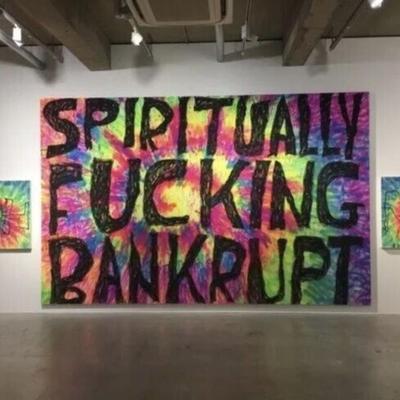
Takashi Murakami- Pillow release by Kaikai Kiki designed by artist Madsaki, full size. SIZE: 60cm X 43cm Madaski: Born in Osaka in 1974 and relocated to New Jersey at a young age, MADSAKI graduated from the Parsons School of Design in New York (BFA, 1996) and was a member of international artist group Barnstormers before starting his solo career. Both satirical and sentimental, aggressive yet vulnerable, MADSAKI has used graffiti influences as a way to express the frustration and alienation of his bicultural identity and to critique the value of art. -

Robot Chest Piece | ELYSIUM (2013) Movie Prop. A robot chest piece from Neill Blomkamp's 2013 action sci-fi film, Elysium. Set in the year 2154, the very wealthy live on a man-made space station while the rest of the population resides on a ruined Earth and Max Da Costa (Matt Damon) takes on a mission that could bring equality to the polarized worlds. An army of robots built by Armadyne Corp serves as the police force in the slums of Earth. Early in the film, Max can be seen assembling robots in the factory. This chest piece is made from thick resin. The piece is purposely unfinished as it was designed to be in scenes in which robots are being built. Painted silver, the Armadyne logo is imprinted at the bottom of the piece. Showing some signs of wear from production use, distressing, and storage this piece is in overall great condition. This is just one of the 4 I have from the production. I have a printed copy of the COA since I split the plates into 4 lots. -
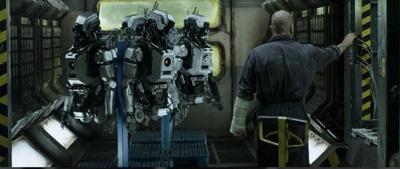
Robot Chest Piece | ELYSIUM (2013) Movie Prop. A robot chest piece from Neill Blomkamp's 2013 action sci-fi film, Elysium. Set in the year 2154, the very wealthy live on a man-made space station while the rest of the population resides on a ruined Earth and Max Da Costa (Matt Damon) takes on a mission that could bring equality to the polarized worlds. An army of robots built by Armadyne Corp serves as the police force in the slums of Earth. Early in the film, Max can be seen assembling robots in the factory. This chest piece is made from thick resin. The piece is purposely unfinished as it was designed to be in scenes in which robots are being built. Painted silver, the Armadyne logo is imprinted at the bottom of the piece. Showing some signs of wear from production use, distressing, and storage this piece is in overall great condition. This is just one of the 4 I have from the production. I have a printed copy of the COA since I split the plates into 4 lots. -

Robot Chest Piece | ELYSIUM (2013) Movie Prop. A robot chest piece from Neill Blomkamp's 2013 action sci-fi film, Elysium. Set in the year 2154, the very wealthy live on a man-made space station while the rest of the population resides on a ruined Earth and Max Da Costa (Matt Damon) takes on a mission that could bring equality to the polarized worlds. An army of robots built by Armadyne Corp serves as the police force in the slums of Earth. Early in the film, Max can be seen assembling robots in the factory. This chest piece is made from thick resin. The piece is purposely unfinished as it was designed to be in scenes in which robots are being built. Painted silver, the Armadyne logo is imprinted at the bottom of the piece. Showing some signs of wear from production use, distressing, and storage this piece is in overall great condition. This is just one of the 4 I have from the production. I have a printed copy of the COA since I split the plates into 4 lots. -
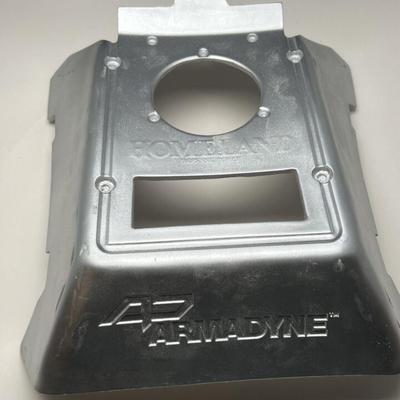
Robot Chest Piece | ELYSIUM (2013) Movie Prop. A robot chest piece from Neill Blomkamp's 2013 action sci-fi film, Elysium. Set in the year 2154, the very wealthy live on a man-made space station while the rest of the population resides on a ruined Earth and Max Da Costa (Matt Damon) takes on a mission that could bring equality to the polarized worlds. An army of robots built by Armadyne Corp serves as the police force in the slums of Earth. Early in the film, Max can be seen assembling robots in the factory. This chest piece is made from thick resin. The piece is purposely unfinished as it was designed to be in scenes in which robots are being built. Painted silver, the Armadyne logo is imprinted at the bottom of the piece. Showing some signs of wear from production use, distressing, and storage this piece is in overall great condition. This is just one of the 4 I have from the production. I have a printed copy of the COA since I split the plates into 4 lots. -

Robot Chest Piece | ELYSIUM (2013) Movie Prop. A robot chest piece from Neill Blomkamp's 2013 action sci-fi film, Elysium. Set in the year 2154, the very wealthy live on a man-made space station while the rest of the population resides on a ruined Earth and Max Da Costa (Matt Damon) takes on a mission that could bring equality to the polarized worlds. An army of robots built by Armadyne Corp serves as the police force in the slums of Earth. Early in the film, Max can be seen assembling robots in the factory. This chest piece is made from thick resin. The piece is purposely unfinished as it was designed to be in scenes in which robots are being built. Painted silver, the Armadyne logo is imprinted at the bottom of the piece. Showing some signs of wear from production use, distressing, and storage this piece is in overall great condition. This is just one of the 4 I have from the production. I have a printed copy of the COA since I split the plates into 4 lots. -
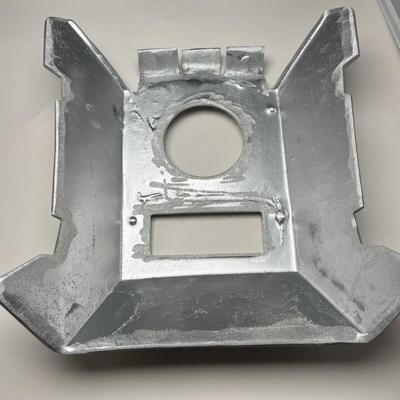
Robot Chest Piece | ELYSIUM (2013) Movie Prop. A robot chest piece from Neill Blomkamp's 2013 action sci-fi film, Elysium. Set in the year 2154, the very wealthy live on a man-made space station while the rest of the population resides on a ruined Earth and Max Da Costa (Matt Damon) takes on a mission that could bring equality to the polarized worlds. An army of robots built by Armadyne Corp serves as the police force in the slums of Earth. Early in the film, Max can be seen assembling robots in the factory. This chest piece is made from thick resin. The piece is purposely unfinished as it was designed to be in scenes in which robots are being built. Painted silver, the Armadyne logo is imprinted at the bottom of the piece. Showing some signs of wear from production use, distressing, and storage this piece is in overall great condition. This is just one of the 4 I have from the production. I have a printed copy of the COA since I split the plates into 4 lots. -
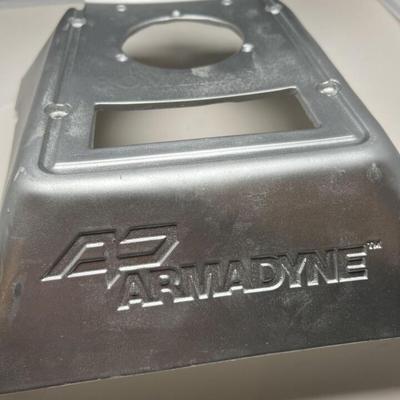
Robot Chest Piece | ELYSIUM (2013) Movie Prop. A robot chest piece from Neill Blomkamp's 2013 action sci-fi film, Elysium. Set in the year 2154, the very wealthy live on a man-made space station while the rest of the population resides on a ruined Earth and Max Da Costa (Matt Damon) takes on a mission that could bring equality to the polarized worlds. An army of robots built by Armadyne Corp serves as the police force in the slums of Earth. Early in the film, Max can be seen assembling robots in the factory. This chest piece is made from thick resin. The piece is purposely unfinished as it was designed to be in scenes in which robots are being built. Painted silver, the Armadyne logo is imprinted at the bottom of the piece. Showing some signs of wear from production use, distressing, and storage this piece is in overall great condition. This is just one of the 4 I have from the production. I have a printed copy of the COA since I split the plates into 4 lots. -
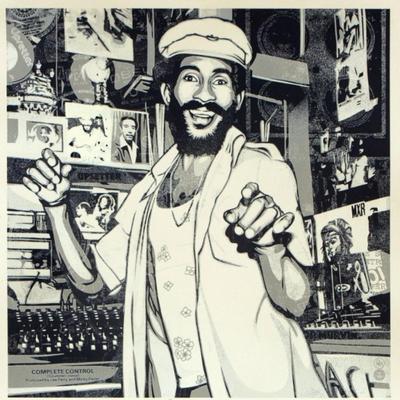
Artist: Shepard Fairey Title: Scratch on the Wire Size: 24 x 24 inches. Screen print on thick cream Speckletone paper. Original photo by Dennis Morris. Signed by Shepard Fairey and Dennis Morris. Numbered edition of 600. Legendary reggae producer and pioneer of the dub sound, Lee Scratch Perry passed away on Aug. 29. I first discovered Lee Perry when I got deep into Bob Marley and the Wailers found out Perry had produced several seminal Wailers tracks. I also loved the Clash song Police and Thieves; which I learned was a cover of the version by Jamaican artist Junior Murvin which Lee Perry had produced. Perry also co-produced the song Complete Control; by the Clash. Perry also made a ton of great music with his band the Upsetters, as well collaborating with a range of artists from King Tubby, to Adrian Sherwood, to the Beastie Boys. I was excited when photographer Dennis Morris suggested we collaborate on a tribute to Lee Scratch Perry and I decided to make an illustration based on a few of Dennis 1970s photos of Perry at work in his Black Ark recording studio. I love the visual energy of Perry and the studio itself, which I think conveys the sonic energy and joyful spirit of Perry as a musician, producer, and iconic pioneer. - Shepard He was the light! The strangest thing about Lee Perry was, whenever I photographed him, I never needed any light. For exemple, the last session I did with him in the early 2000, we spent the night travelling around London on top of a open top bus; it was late, it was dark but Scratch shone, he provided the light! He was truly a magical master of music and sound. He did not just hear music, he saw music, he saw the colours. To see him in the studio perform was truly magical, he jumped, he pounced, he pushed a button... he pushed another button and sounds just exploded from the speakers! -Dennis Morris -

Artist: Shepard Fairey Title: Scratch on the Wire Size: 24 x 24 inches. Screen print on thick cream Speckletone paper. Original photo by Dennis Morris. Signed by Shepard Fairey and Dennis Morris. Numbered edition of 600. Legendary reggae producer and pioneer of the dub sound, Lee Scratch Perry passed away on Aug. 29. I first discovered Lee Perry when I got deep into Bob Marley and the Wailers found out Perry had produced several seminal Wailers tracks. I also loved the Clash song Police and Thieves; which I learned was a cover of the version by Jamaican artist Junior Murvin which Lee Perry had produced. Perry also co-produced the song Complete Control; by the Clash. Perry also made a ton of great music with his band the Upsetters, as well collaborating with a range of artists from King Tubby, to Adrian Sherwood, to the Beastie Boys. I was excited when photographer Dennis Morris suggested we collaborate on a tribute to Lee Scratch Perry and I decided to make an illustration based on a few of Dennis 1970s photos of Perry at work in his Black Ark recording studio. I love the visual energy of Perry and the studio itself, which I think conveys the sonic energy and joyful spirit of Perry as a musician, producer, and iconic pioneer. - Shepard He was the light! The strangest thing about Lee Perry was, whenever I photographed him, I never needed any light. For exemple, the last session I did with him in the early 2000, we spent the night travelling around London on top of a open top bus; it was late, it was dark but Scratch shone, he provided the light! He was truly a magical master of music and sound. He did not just hear music, he saw music, he saw the colours. To see him in the studio perform was truly magical, he jumped, he pounced, he pushed a button... he pushed another button and sounds just exploded from the speakers! -Dennis Morris -

Artist: Fin DAC Title: Hunky Dory Ed of 3. 6 colour screen print on 600gsm textured grey card with red oxide foil mask. Size: 56cm x 76cm Signed, numbered and double stamped by the artist. Comes with COA. Born in Cork, Ireland, but actively plying his trade worldwide, Fin DAC is a self-taught, non-conformist urban artist who has defined and perfected an atypical spray paint style he has dubbed Urban Aesthetics. Through his work, the artist explores themes related to female emancipation and empowerment, readjusting the male gaze and disrupting colonialist attitudes particularly surrounding the Eastern experience. His recent print release, Velveteen with West Contemporary Editions was an instant sell-out, followed by Project 24 - 24 artworks sold over a period of 24 hours, one per hour also proving a sensational success, with the longest time an artwork took to sell being just 9 minutes after it was published. Fin is known on a global scale for his depictions of Eurasian women and is inspired by traditional and ceremonial dressing, in which these subjects engage. His work, on walls, paper, wood and metal crafts a narrative that celebrates their sensuality with cultural sensitivity, rather than appropriation. When he works in an outdoor context, the women Fin DAC paints are often large and commanding, claiming ownership over their urban environment. Although his murals are present in countries and continents all over the globe, Fin DAC remains very much an outsider of the street art scene. -
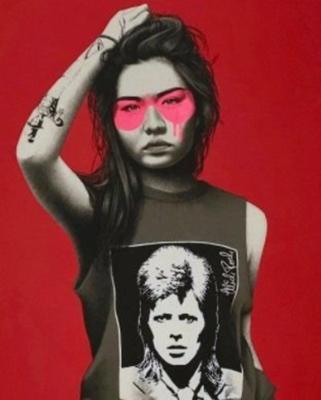
Artist: Fin DAC Title: Hunky Dory Ed of 3. 6 colour screen print on 600gsm textured grey card with red oxide foil mask. Size: 56cm x 76cm Signed, numbered and double stamped by the artist. Comes with COA. Born in Cork, Ireland, but actively plying his trade worldwide, Fin DAC is a self-taught, non-conformist urban artist who has defined and perfected an atypical spray paint style he has dubbed Urban Aesthetics. Through his work, the artist explores themes related to female emancipation and empowerment, readjusting the male gaze and disrupting colonialist attitudes particularly surrounding the Eastern experience. His recent print release, Velveteen with West Contemporary Editions was an instant sell-out, followed by Project 24 - 24 artworks sold over a period of 24 hours, one per hour also proving a sensational success, with the longest time an artwork took to sell being just 9 minutes after it was published. Fin is known on a global scale for his depictions of Eurasian women and is inspired by traditional and ceremonial dressing, in which these subjects engage. His work, on walls, paper, wood and metal crafts a narrative that celebrates their sensuality with cultural sensitivity, rather than appropriation. When he works in an outdoor context, the women Fin DAC paints are often large and commanding, claiming ownership over their urban environment. Although his murals are present in countries and continents all over the globe, Fin DAC remains very much an outsider of the street art scene.
Advertisement
